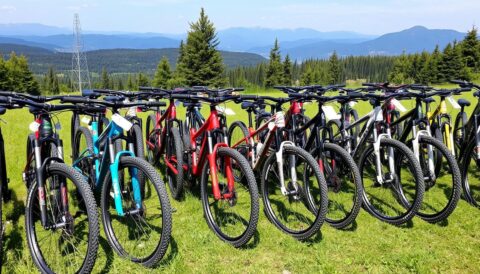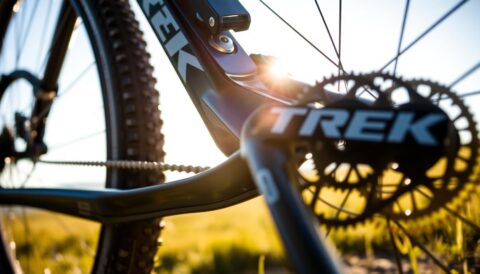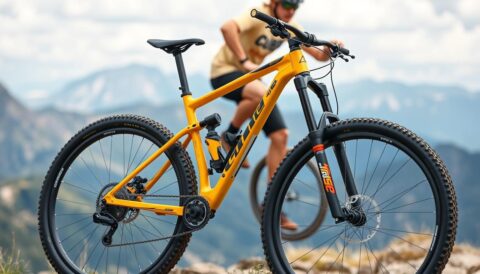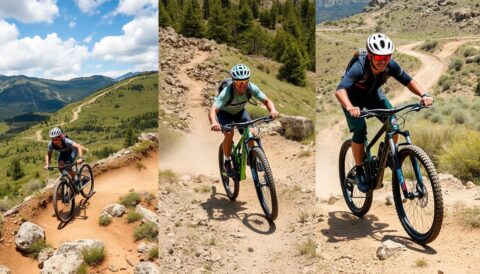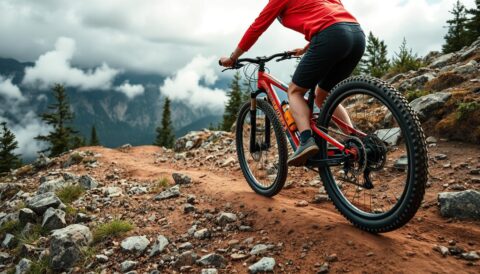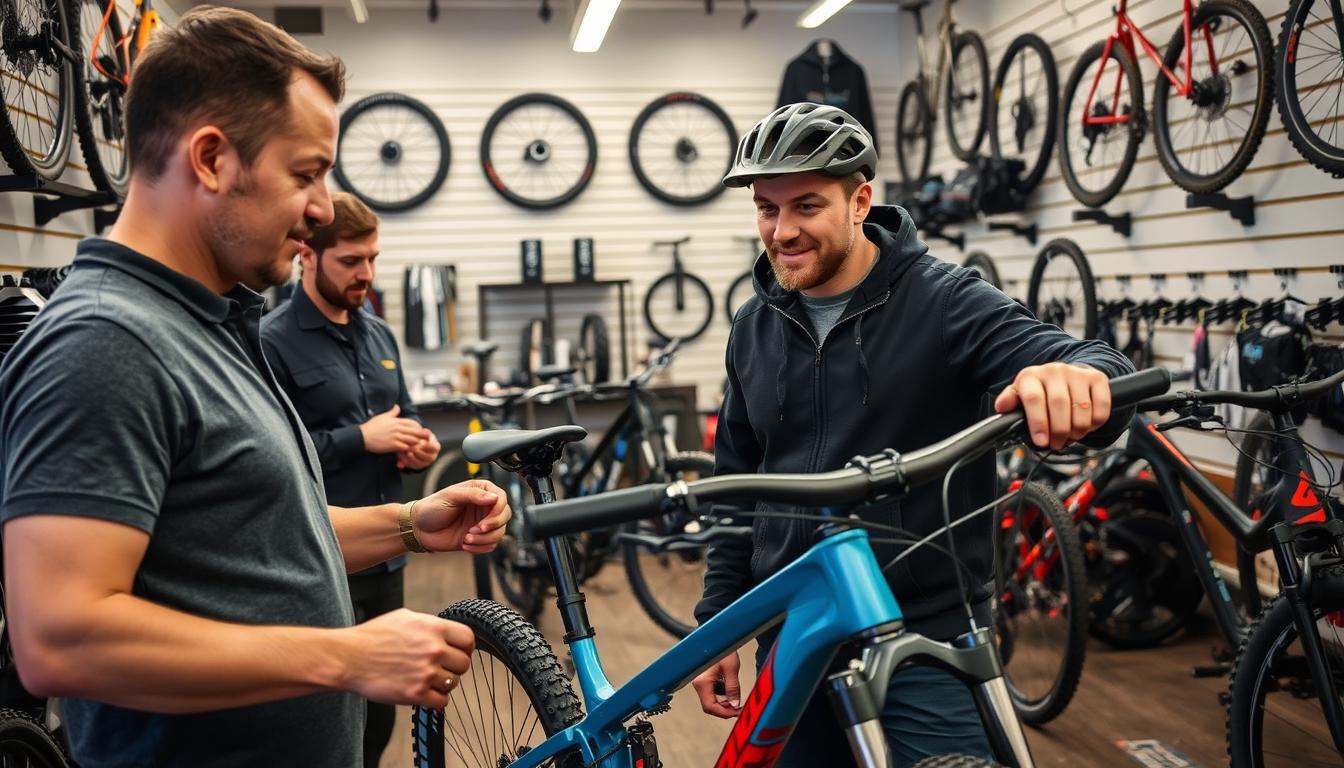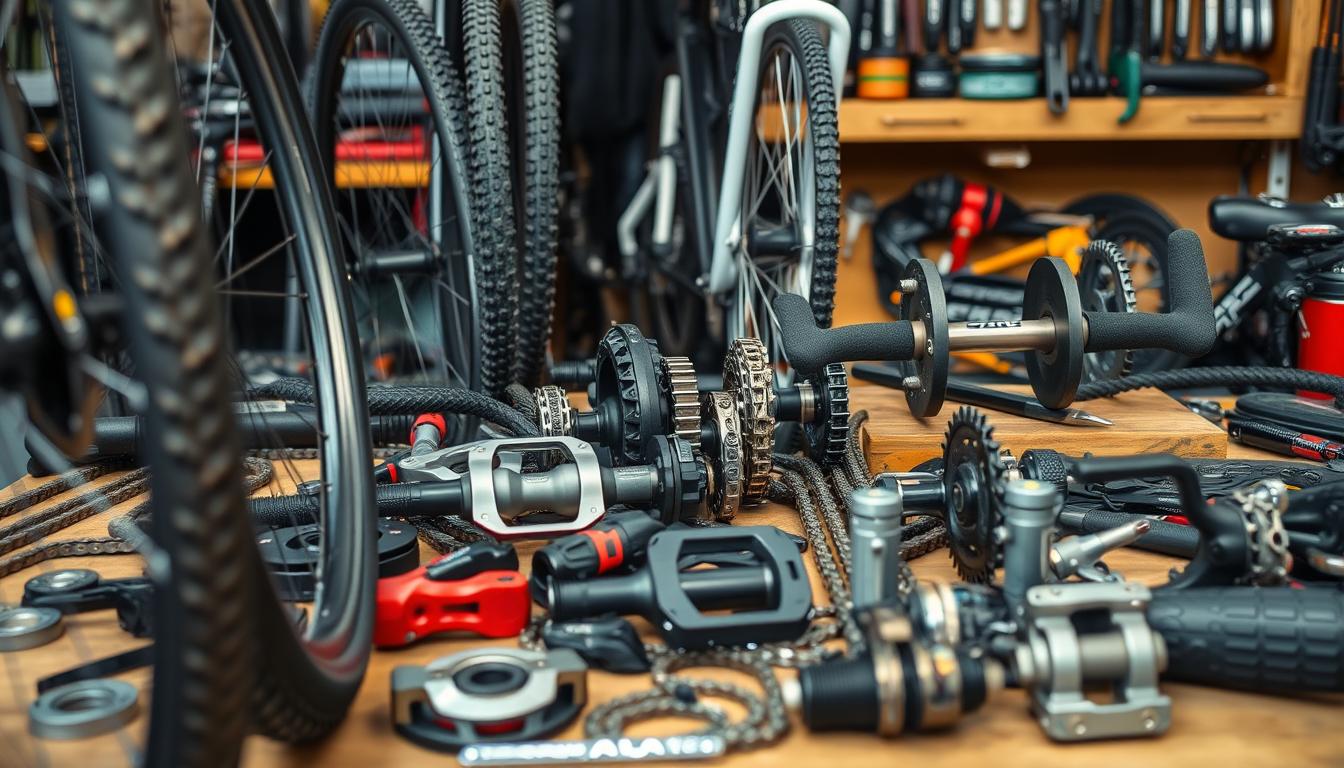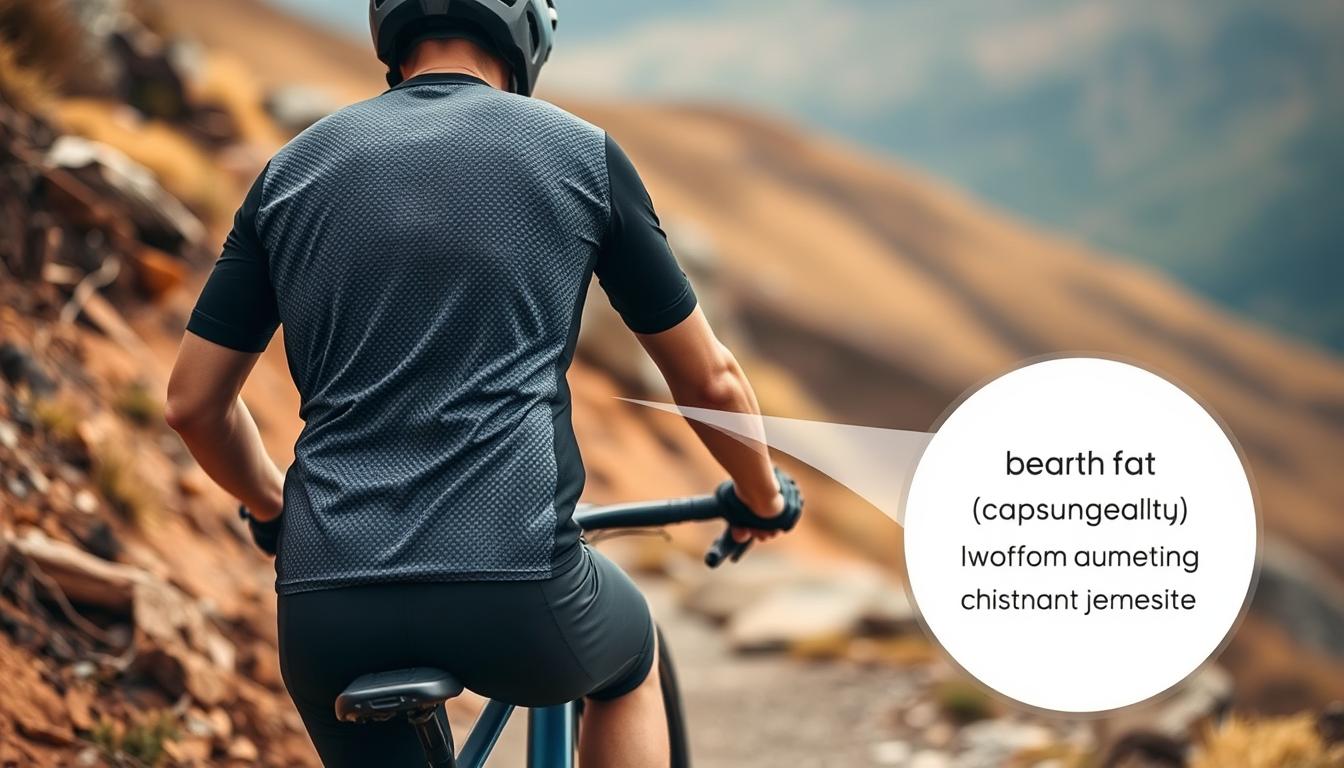Choosing between full suspension mountain bikes and hardtail mountain bikes is crucial for mountain biking fans. These two distinct mountain bike types cater to different preferences and styles of riding.
Full suspension bikes, with both front and rear shock absorbers, offer better comfort on rough terrains. They are perfect for riders who love tackling tough trails with bumps and jumps. On the flip side, hardtail bikes come with a stiff back and front suspension. They are lighter and less expensive. This makes them a great first bike for beginners.
When choosing a bike, think about comfort, the terrains you’ll ride on, cost, and how much care your bike will need. For example, full suspension bikes usually cost more, starting at about £1200. Hardtails are cheaper, with prices starting around £350. This makes hardtails a great value for those just starting with mountain biking. Check out the best beginner bikes for 2024 here.
To sum up, knowing the benefits and features of each bike type will seriously improve your mountain biking experience. It’s all about finding the perfect match for your adventures across various terrains.
Understanding the Basics of Mountain Bikes
Mountain bikes are designed for rough terrains. They provide stability and comfort. Their design helps absorb shocks from obstacles like bumps and jumps. This makes them perfect for various riding terrains. They let outdoor fans explore everything from smooth paths to tough trails.
Definition and Purpose of Mountain Bikes
To understand mountain bike definitions, note their key features. They have wide tyres and strong frames. Plus, a suspension system made for off-road outings. They make it possible to enjoy outdoor adventures on difficult routes with confidence.
Importance of Suspension Systems
The importance of bike suspension is huge. It helps handle impacts from rough ground. This means better control over the bike. Different suspension types change how a bike performs. Air springs give a light and responsive ride. Coil shocks offer more sensitivity but are heavier.
Settings like low-speed compression damping change suspension behavior during slow squeezes. Some bikes even have presets for fast compressions. This lets riders find the right setup for their style. Air springs’ progressive spring rates also help prevent harsh stops during steep drops. A good suspension system makes riding better on any ground.
What are Hardtail Mountain Bikes?
Hardtail mountain bikes have a unique design. They come with a front suspension fork and a solid back. This makes them light and quick, perfect for climbing hills. The hardtail characteristics make these bikes simpler to handle and look after. With fewer parts, they are cheaper and easier to maintain.
Characteristics of Hardtails
Hardtail mountain bikes are known for their speed and agility. They’re great on smooth trails and easy for beginners to use. Their lightweight makes them a budget-friendly choice, starting at about £350.
- Lightweight frame for easier manoeuvrability.
- Lower price point compared to full suspension bikes.
- Less complex maintenance requirements.
- Ideal for developing essential riding skills.
Performance on Various Terrains
On fast, smooth paths, hardtail bikes do really well. They let you go fast and keep control on easier surfaces. But, on rough or uneven ground, they might not be as comfortable. Riders need to pick their path wisely to get the most out of their journey.
Hardtails aren’t the best for very muddy paths or big hills without help. But, they are great for new riders and those wanting to get better at biking. For more on choosing between hardtail and full suspension bikes, check out this resource.
What are Full Suspension Mountain Bikes?
Full suspension mountain bikes, also known as dual suspension bikes, have both front and rear shock absorbers. This design improves riding comfort. It soaks up bumps from rough grounds, helping riders keep control.
Key Features of Full Suspension Bikes
These bikes boast features tailored to different riding styles. They come with a variety of travel options:
- Cross-country: 100-120 mm
- Trail/All-mountain: 120-150 mm
- Enduro: 150-170 mm
- Freeride: 170-200 mm
- Downhill: 190-200 mm
Made from carbon or aluminium, they’re both strong and light. Modern versions have disc brakes, wide bars, and big tyres. These features boost comfort and trail performance.
Advantages Over Hardtails
Compared to hardtails, full suspension bikes give you more control. This is especially true on steep or rough paths. They keep the tyres on the ground better, lowering fatigue during long rides.
Yes, they can cost more and need extra upkeep. But, for tough trails, they’re a smart buy. The suspension helps with quicker turns and smoother rides over bumps.
If you want a safer, more fun ride, and especially if you’re new or have injuries, full suspension bikes are great. They shine on technical paths or unpredictable grounds.
Comparison of Suspension Systems
The differences between hardtail and full suspension mountain bikes go beyond their structure. How these suspension systems work affects how comfortable the ride is and how well you can control the bike. This makes them key in making your ride better.
Mechanics of Hardtail vs Full Suspension
Hardtail bikes have a straightforward design with just a front suspension fork. They are light and good for climbing hills because of this. They are also easier to look after and don’t cost as much to own. On the other hand, full suspension bikes have a rear suspension that makes rides softer on tough trails.
Hardtail bikes suit beginners and those watching their spending.
Full suspension bikes, meanwhile, are better for rough ground. They offer more grip and control. Yet, they need more care and might cost more in the long run.
Effect on Ride Comfort and Control
Full suspension systems offer more comfort, which means better control on rough grounds. This can make riders feel more confident, especially going downhill. In contrast, hardtails are great for smoother paths. They let you move quickly and ride efficiently.
Knowing about suspension can help riders pick the right bike for them. It depends on what you value more: comfort and control with full suspensions, or the simplicity and efficiency of hardtails. Ultimately, it’s about your personal taste and where you plan to ride.
Weight and Performance Differences
Bike weight is key in mountain biking. Hardtail bikes are lighter than full suspension bikes. This is because of their simpler design. They’re great for climbing, making them ideal for cross-country events. Riders find them fast on uphill routes because they’re so light.
How Weight Influences Riding
Full suspension bikes are heavier, which can make climbing harder. However, they’re better for downhill control. Their design, with rear shocks, offers stability on rough ground. This helps riders handle tricky paths and steep drops better. These bikes give excellent traction and grip, which is a plus on challenging trails.
Efficiency on Uphills and Downhills
Choosing between hardtail and full suspension depends on what you like and where you ride. Hardtails cost less and are easier to keep up. Full suspension bikes are pricier but more comfortable for long rides. Think about if you prefer going uphill fast or having better control downhill. For more info, check out this detailed guide.
FAQ
What is the main difference between full suspension and hardtail mountain bikes?
Full suspension bikes come with front and rear shock absorbers. This setup makes riding on rough terrain more comfortable and controlled. On the other hand, hardtails have only front suspension. This makes them lighter and better for climbing.
Which type of mountain bike is better for beginners?
Beginners often find full suspension bikes better. They offer more comfort and stability on rough ground. This makes learning to mountain bike more enjoyable.
Are hardtail bikes suitable for climbing?
Yes, hardtail bikes are great for climbing. Their light weight and front suspension make them efficient. They perform well on smooth trails, making climbs easier for skilled riders.
Do full suspension bikes require more maintenance than hardtails?
Yes, full suspension bikes need more care. They have complex parts like rear shock absorbers that need regular checks. Hardtails are simpler and cost less to maintain.
What are the advantages of using a full suspension bike on technical trails?
Full suspension bikes improve shock absorption and traction on tough trails. They help riders stay in control. This makes rides less tiring, especially on long or steep paths.
Can hardtails handle rough terrains effectively?
Hardtails work well on moderately tough terrains. But, they might not be the best on very rocky or uneven paths. Riders need to be careful about where they ride to stay comfortable.
Is weight a significant factor in mountain biking performance?
Certainly, weight is crucial. Hardtails are lighter, making them great for uphill rides. Full suspension bikes are heavier but offer better comfort and control on downhills and rough trails.
What should I consider when choosing between hardtail and full suspension bikes?
Consider your riding style, the terrain, budget, and maintenance willingness when choosing. Both bike types have unique benefits. The best choice matches your biking goals.

